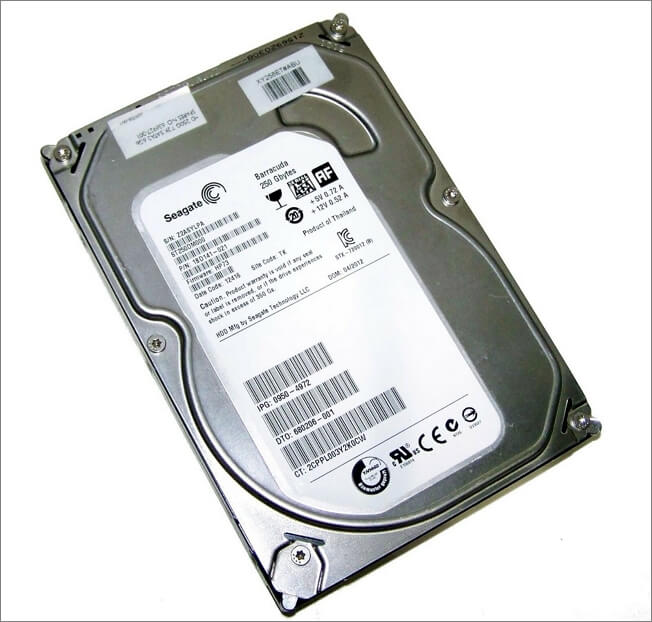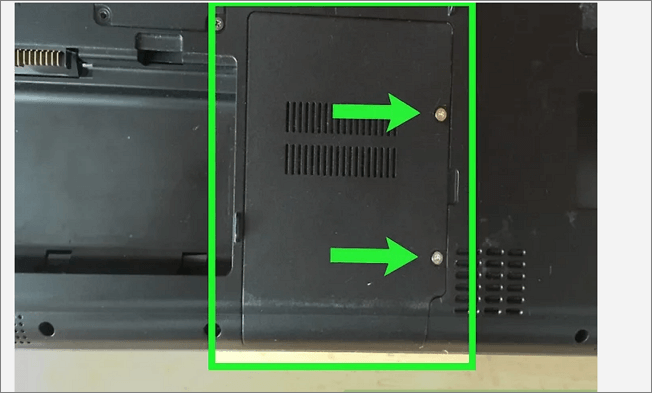Where Is The Hard Drive on A Laptop?
A hard drive is the storage component of a computer or laptop. It is, therefore, responsible for keeping data such as media and document files on your PC. But hard drives differ in types, sizes, and laptop models. Hence, the location of a hard drive in a laptop may differ from one to another. Some are located at the bottom of the laptop; some are in the front or side of the laptop. No matter the location of your hard drive, it is essential to carefully handle the hard drive regardless of the need to remove it.

Types of Hard Drives
1. Internal Hard Drive
Internal hard drives are usually installed in the laptop or desktop PC tower. In contrast, the external hard drives are connected to a laptop via Universal Serial Bus (USB) cable. Sometimes, they are connected via a Firewire connection.
Although internal and external hard drives contain spinning plates and write data to magnetic discs, they have peculiarities. For instance, internal hard drives are faster to use because they work directly with the motherboard rather than a cable.

Furthermore, they typically have a bigger potential storage capacity than external HDDs. Again, compared to buying a quality external hard drive, internal HDDs are more affordable, especially when you consider the fact they come along with purchasing a laptop. Since the HDD is built into the laptop, it is almost at a discounted price with the laptop or desktop computer.
Moreover, internal hard drives are always connected to the laptop, so there's no need to worry about loss or vulnerability to external factors that can damage them.
2. External Hard Drive
External hard drives perform the same functions as internal hard drives, yet they possess some peculiarities. They are usually installed on the laptop by connecting them via USB cables, and you can then save your files, whether software, media, or document files.
Also, they can serve as backup to the laptop's internal HDDs, precluding any possible loss or theft of your important files. If you duplicate your files by backing them up on your external hard drive, you can be assured of the safety of your documents.

External hard drives also have huge storage capacity, saving many documents, images, videos, and more. Depending on the model and the drive manufacturer, it is possible to increase the
data.
How Do I Locate the Hard Drive in a Laptop
The internal hard drive of a laptop can be located in different parts of the laptop. Some are mounted under the laptop, some are installed on the front of the laptop, yet, some are located by the side of the laptop. The manufacturer and the laptop model usually determine the internal HDDs' locations.
- Bottom-mounted Hard Drive
A bottom-mounted hard drive is usually posited beneath the laptop, and you can locate it by turning your laptop over. You will find a small section, usually rectangular, that indicates the location of the internal hard drive. To open this section, unscrew the plastic casing and carefully detach the hard drive. Please go through the same process to replace it.
- Front-mounted Hard Drive
Front-mounted hard drives are posited by the front side of a laptop, opposite the user's viewpoint. So, to access the hard drive, you will have to turn the laptop over and unscrew the rectangular section that encloses the hard drive. However, you must be conscious of the delicate components of the laptop, like the screen, webcam, and flex of the laptop, since this is a front-mounted hard drive. After unscrewing the casing, carefully push to detach the hard drive. Please do the same to connect it back to the laptop.
- Side-mounted Hard Drive
Mounting an internal hard drive by the side of the laptop is now very common. Side-mounted HDDs are usually fixed beside the CD ROM. There is usually a rectangular cut-out section by the left or right side of the laptop, tightened by two or four screws, depending on the model. Unscrewing this section will reveal the hard drive. Carefully detach the hard drive.
How Do I Remove a Hard Drive From a Laptop
The hard drive is responsible for storing files, your credentials, music playlist, photos from vacation, top-notch movies, etc. Therefore, you must handle it carefully when you want to remove it from the laptop. The following is the step-by-step guide to removing an internal hard drive from a laptop.
Step 1. Backup your important files
This article has earlier stated the importance of backing up your files (to avoid the loss of any of your files). You can back them up on an external hard drive.
Step 2. Disconnect the laptop from any power source or your battery
It is strongly advised never to do repairs on a laptop if it is connected to any power source. Else you will be vulnerable to electric shock. Also, ensure you disconnect the laptop battery before you unscrew anything on the laptop. Disconnect all cables, too, whether USB or network cables. Ensure the laptop is shut down.
Step 3. Unscrew the access panel.
The access panel encloses the hard drive mount, which serves as a covering for the hard drive. Hence, carefully unscrewing the access panel and hard drive mount is important to remove the hard disk.

Step 4. Carefully detach the HDD from the connectors.
Carefully pull the hard drive from the connectors to detach it. Sometimes, you may need a flat tool to achieve this. After this, carefully place it on a neat, stable, dry surface.

Conclusion
Whether you want to replace your internal hard drive or not, it is expected to know where it is located on your laptop. This may inform the way you handle your laptop. This article has done justice to the types of hard drives (including their differences and similarities), outlined the different possible locations of a laptop's hard drive, and provided a guide on removing the hard drive. Whether you are an engineer or own a laptop, this information has helped you.
Related Articles
- How to Fix Nikon 'This Memory Card Cannot Be Used' Error
- Best Ways To Fix Windows PowerShell Keeps Popping Up
- How to Clear Memory and Increase RAM in Windows 10/8/7?
- External Hard Drive Takes Forever to Load